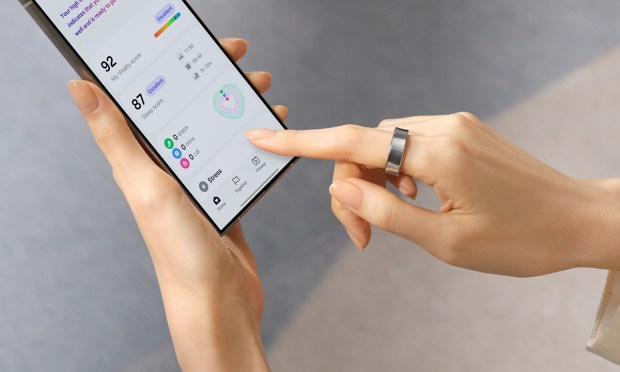Smarter Wearables Highlight Demand for Real-Time Fitness Data

Led by names like Google, Apple and Samsung, the wearables category of the connected economy has become a study in contradictions.
New, high-profile introductions have accelerated due to recent events like the Consumer Electronics Show and Mobile World Congress (MWC). On the other hand, niche players have also become more aggressive providing new use cases for the category.
And while some companies are working to create a “super wearable” that unites disparate fitness data sources, others are sticking with the proprietary approach. These dynamics have put wearable innovations back on the agenda for a huge consumer market. PYMNTS research as of November 2022 put that market north of 96 million U.S. consumers.
However, interoperability and data usage has become an issue, as seen with the most recent product introductions. Samsung used MWC to introduce a coordinated series of connected devices featuring its first-ever smart ring. Called the Galaxy Ring, it will compete with Oura and eventually, Apple.
Like other smart rings, it ticks all the boxes for personal health data, from movement to sleep to heart rate and more. The Galaxy series leans heavily on mobile AI, and one of its selling points is its ability to aggregate at least some of the data a consumer will get from watches, headsets, glasses and other more niche products such as headbands that track brainwave activity.
Samsung’s new Galaxy series, introduced at MWC, uses the phone as the AI-driven hub, connecting the ring, Galaxy Watch, Galaxy Book series of laptops and even the smart home Internet of Things platform. The company’s positioning distanced itself from the hype surrounding the ring, focusing instead on the data issue.
“One of the biggest challenges the healthcare industry is facing today is fragmented data and how to bring it all together,” said Samsung’s Dr. Hon Pak, vice president and head of the digital health team. “Our vision is to improve the health of billions through connected care centered around the home by connecting devices, services and people.”
The Galaxy Ring will only interact with Android OS platforms and Samsung products. But Pak’s mission to unify data is one that wearables manufacturers are taking seriously.
For example, Google recently announced that its Google One data subscription platform will include Fitbit. A short time before that, it announced that the redesigned Fitbit app through Health Connect will include data from other wearables and apps like AllTrails, Oura Ring and MyFitnessPal.
Consumers can access the Fitbit app via any Android phone, head to the “You” tab to see all the connected data such as steps, calories burned, floors climbed and distance traveled from Health Connect-compatible apps.
Google has not made any announcements about a potential ring introduction, although it did file a patent for one in 2015.
Oura — which is valued at $2.55 billion — isn’t stopping at its Google partnership. It announced a new integration on March 5 with digital exercise community Strava, which claims 120 million users. Strava doesn’t have a wearable and Oura needs user growth, so the partnership makes sense for both.
Strava’s announcement sounded the data unification theme. “Strava further defines itself as the nucleus of their active life, connecting health inputs from more devices to tell the full story of an athlete’s performance and improvement,” it stated.
Other more niche players are also leading with data, many of them designed to address specific health conditions. Dexcom, for example, provides glucose and insulin level data in real-time via a wearable that sticks on the patient’s skin.
At Los Angeles’ Cedars-Sinai Medical Center, research is going much deeper into potential disease diagnosis, based on the data produced by a customized wearable device. For example, according to Dr. Joseph Schwab, director of the Cedars-Sinai Center for Surgical Innovation and Engineering, when a doctor uses a reflex hammer above your knee to test for a reflex reaction, they are only able to identify the presence or absence of the reflex. Wearable devices in development can measure the reflex response, assign data points, and provide a more complete report to the doctor.
“Consumer wearables on the market are essentially motion trackers,” Schwab said. “They may have an accelerometer or gyroscope that can simply measure your position or motion to track steps and other data. What we’re doing is different in that our devices are sending energy — in the form of light, electrical energy and sound — into the tissues, and we can measure that energy as it leaves the tissue, and we can deduce things based on how the energy was affected by the tissue.”

